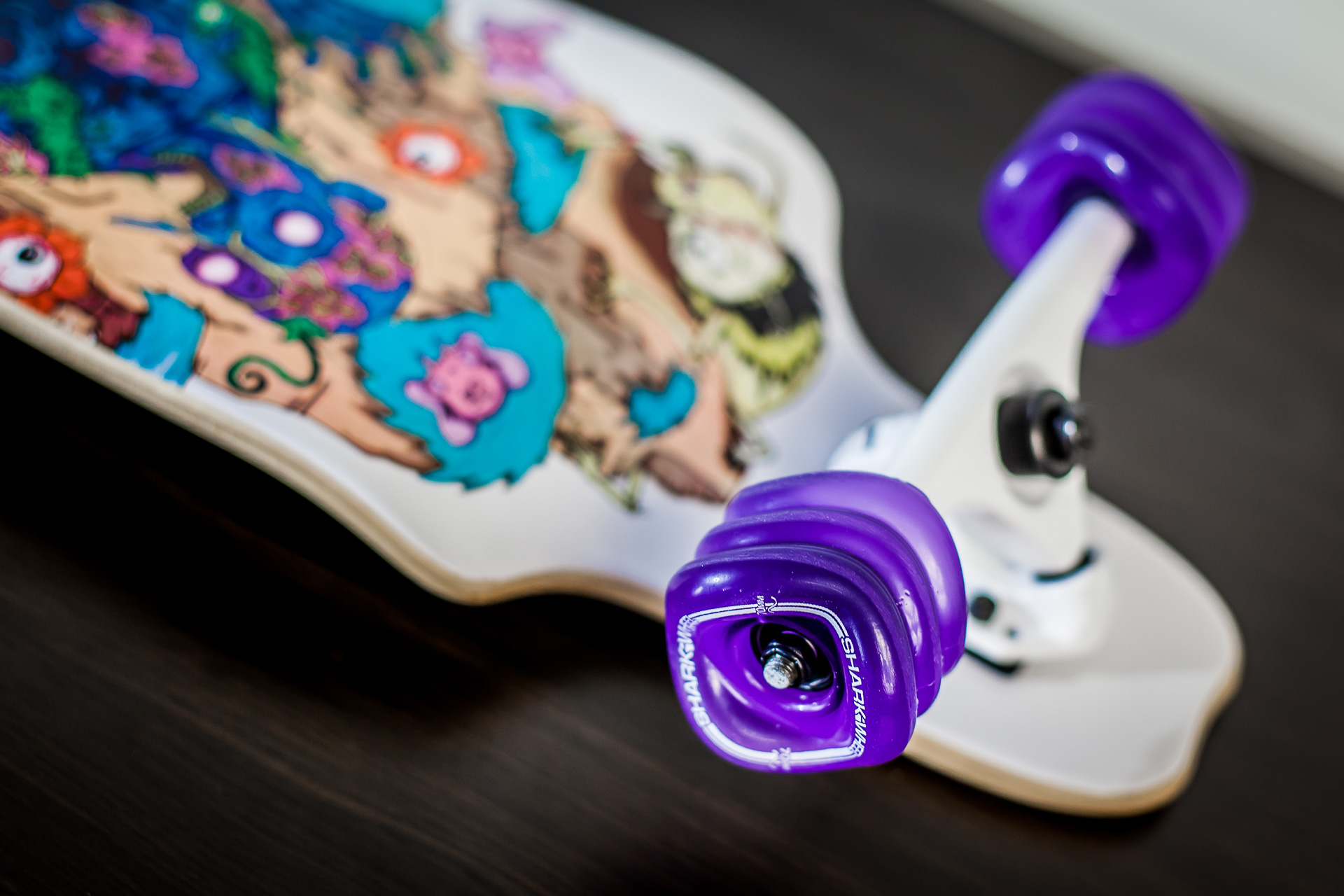

One of the sayings that gets kicked around often is “Don’t reinvent the wheel.” But what if there was a better design out there? For something that gets used in so many applications in our everyday lives, the same general design of the wheel has not changed too much in the last 5,000 years; that is, until now. Shark Wheel has designed a wheel that is faster, more efficient, more versatile, and made of less material.
First, let me be clear: this is far bigger than just skateboard wheels. This is about a design that could revolutionize many other industries, but we will dive into that more later. Shark Wheel developer David Patrick is an avid skateboarder from Orange County, CA, and has been around the sport his whole life; during that time the wheels used hadn’t changed very much. That got him wondering if there was a better design out there that could provide more speed, a smoother ride, and more efficient travel over uneven terrain.
David noticed that in nature movement often manifests itself in repeating wavelengths: light, wind, ocean waves, and even human walking patterns can be mapped out into a series of consecutive high points and low points. He figured that nature was on to something, and looked deeper into this phenomenon.
It’s a square..but a circle?
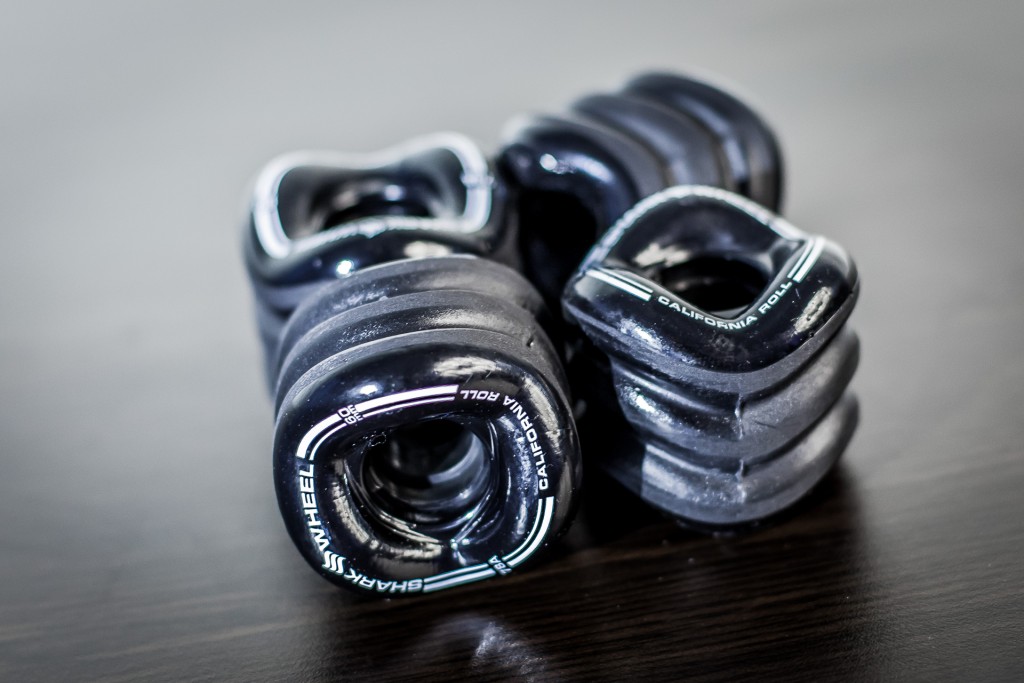
Think back to high school trigonometry. Remember the sine wave? You know, that graph function that looks like a perfectly symmetrical series of smooth hills and valleys? Well Shark Wheel did their research, and it turns out this recurring pattern in nature could be directly graphed as the sine wave. After a ton of research and development he came up with a design that integrated that sine wave onto the skateboard wheel.
After a few test prototypes, three parallel sine waves across the surface of the wheel with valleys in between them became the patented design. If you glance at it from an angle it looks kind of like a square. It has six flat edges that can fit perfectly in a hollow cube. But it’s also a complete circle. Confused yet?
I should note one thing they did completely right was patent the actual design, not just the skateboard wheel but the whole concept. They launched with massive success on Kickstarter, and then were featured on Shark Tank about a year later.
The science behind the design
Think of a snake, and how effortlessly their bodies move across any terrain in a wave motion. The same goes for these wheels; the tread pattern glides over the ground and pushes any debris out of the way in a nonlinear path, rather than trying to roll straight over it.
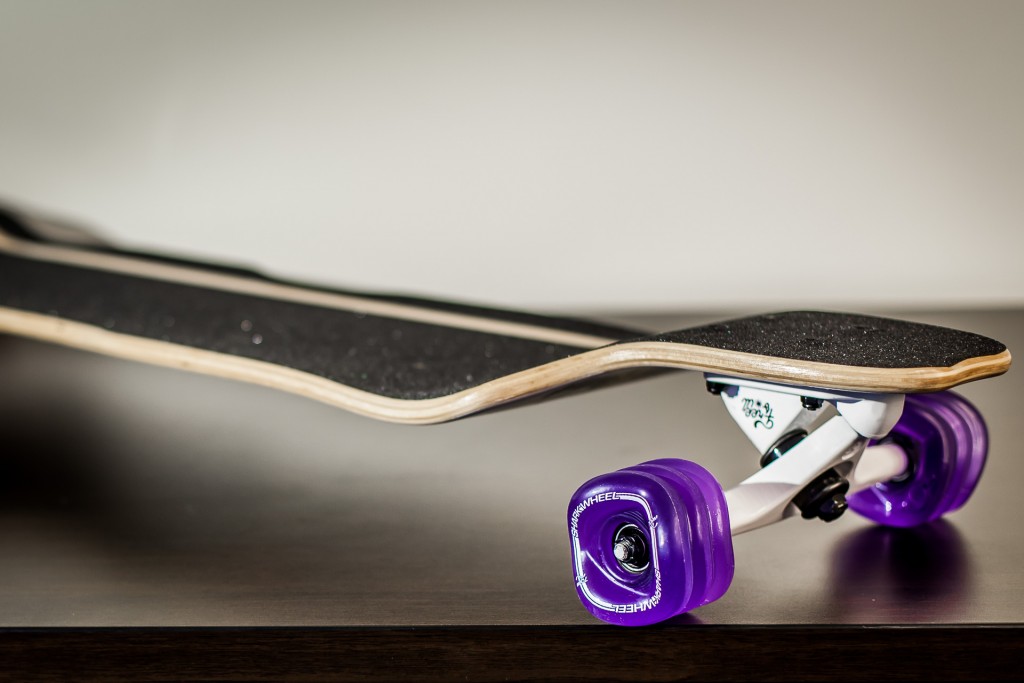
While normal wheels have one point of contact, this design has three separate points at one time, which give the wheels more longevity and even wear. The actual points of contact are narrow though, so there is less surface area in contact with the ground and thereby less friction, producing faster and more efficient travel. Another area where the design is superior is in the construction: this style uses 15% less material than a traditional design, making it more efficient from a substance perspective and lighter in weight. It should be noted that the actual polyurethane molding process is more complex than regular wheels for the same purpose.
Shop for Shark Wheels gear on Newegg
More than just for fun
Skateboard wheels are just the tip of the iceberg; since wheels are used everywhere the possibilities are virtually endless, as this design can be scaled up or down for a multitude of purposes. Tractors, wheelchairs, luggage, farming, office chairs, printers and turbines are a few of the applications that Shark Wheel is currently in the process of developing products for, all with the same basic design shape in common.
One of the biggest current uses for this wheel is in agriculture, and more specifically central irrigation (the big watering pipes on wheels). What can often happen is the wet soil can cause the wheels to lose traction, so they spin in place and get stuck in the mud. With this design, the wheels are moving out of phase like a DNA strand, so instead of getting bogged down even in mud the wheels can “crawl” over top of it.
Another popular application for the Shark Wheel design is in the front casters of wheelchairs, as the current design is prone to easily getting caught on debris and small cracks. This not only makes it harder for the user to operate, but can also lead to a dangerous fall from the chair if the stop is abrupt enough.
When you stop and think of how many different machines use wheels, you start to see how this redesign of something so commonplace could really bring value to so many industries.
How does it actually perform?
Before I saw the wheels in person, I had my reservations. I mean, look at them! How smooth can a square wheel possibly ride? And after all, the last attempt I witnessed to make a square wheel operational was a Mythbusters failure. So the first thing I did when I grabbed the longboard was spin the wheel, and it looked like it was going to wobble off. The edges on both the outside and inside are wavy, so in motion they have a very unbalanced appearance.
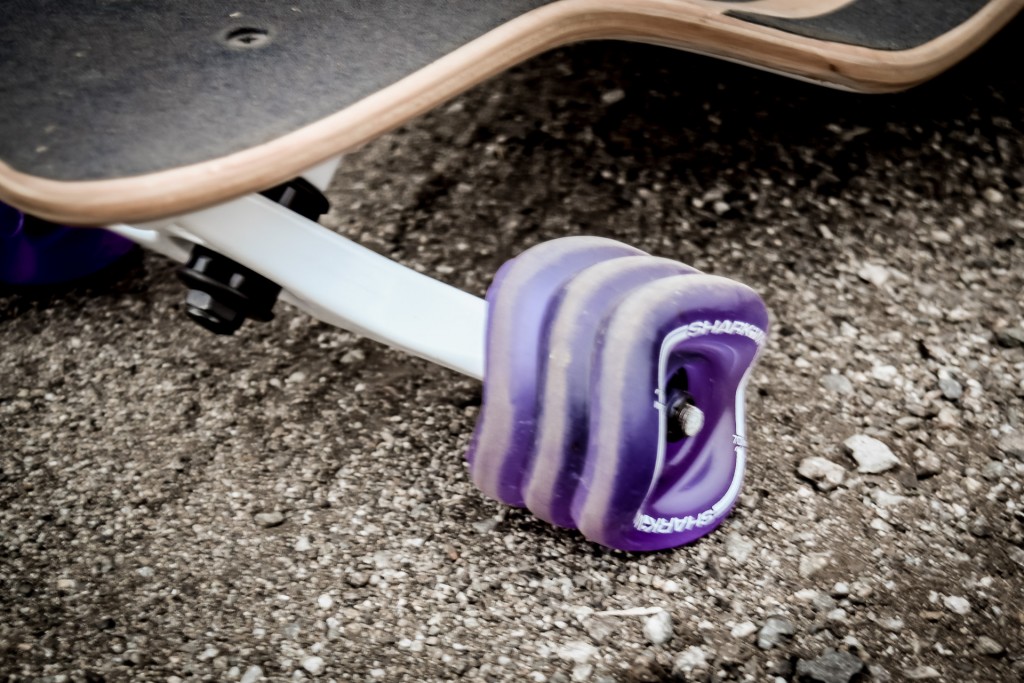
I shrugged it off and figured I would see for myself if theory met practicality here, and started on a concrete sidewalk. The board rolled effortlessly along, and gained speed surprisingly quickly for a flat ground stretch and longboard. It maneuvered well, and the little cracks between sections were almost unnoticeable. The softer the wheels (even on the traditional style) the more shock absorption you have and the smoother the ride.
After I got warmed up on the easy stuff, I decided to really put their claims to the test in a sub-optimal setting: rough asphalt. Now, I used to skateboard all the time in my younger days, so I am very familiar with the feeling of skating on asphalt. Even with softer longboard wheels, you get some vibration in your feet from the variation in the road surface. With smaller and harder wheels it’s like standing on a massager. The second test of the Shark Wheels proved very similar to the first, with little feedback from the road felt in my feet and legs. I did feel it vibrate a small amount, but less than I was expecting. Once again the maneuvering was solid and it was easy to get up to speed quickly.
I figured I would push their design limitations and test it out under the duress of sand, gravel, and grass (the components of my decrepit driveway). I should note that this driveway has remained largely unchanged in the last 50+ years, and it has seen better days. With a few strong pushes I headed in the direction of the rockiest, sandiest part, where the asphalt had eroded away considerably, fully expecting to be flung face-first into the pavement with a jolting stop. I was surprised, however, when the wheels rolled on through the mess and kept going, without much slowing or vibration and leaving little sidewinder marks in the debris as it just got pushed aside. I continued on, coasting over a lump of grass with ease, and wondered why it had taken so long for this type of wheel to be invented. Sure, off-road tires are available for most modes of transportation, but the standard until now has been to go bigger, with deeper treads and more aggressive patterning to achieve mobility.
Design limitations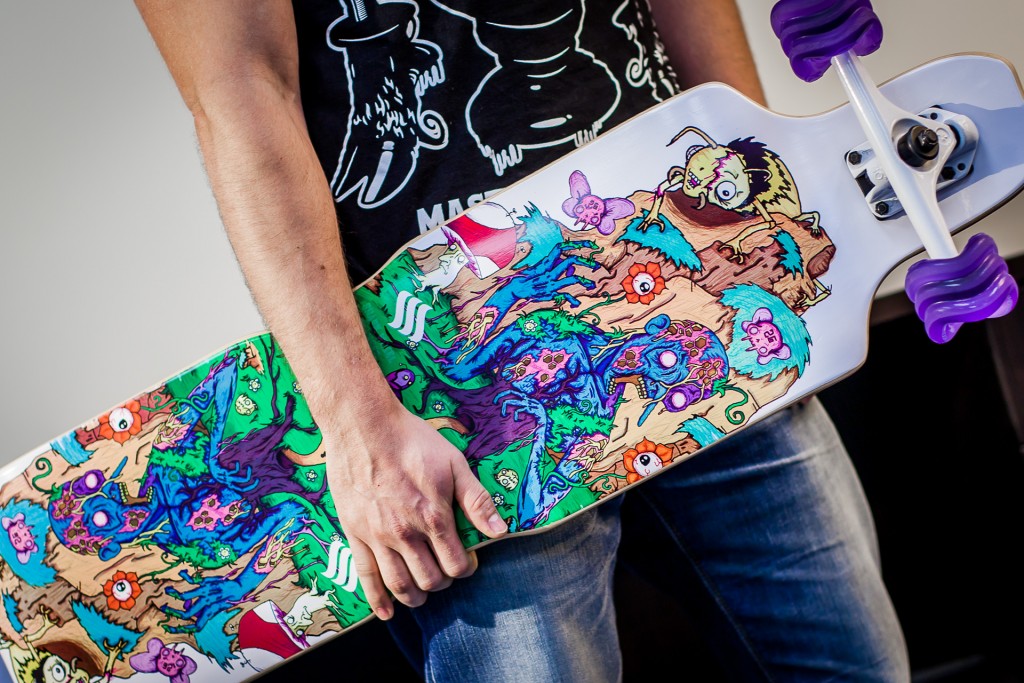
There is one limitation to the use of this design; in its current state, the tread style cannot accommodate a two-wheeled vehicle. Because the wave pattern has three high points and three low points on the sidewall, any angle of tilt causes the wheel to lose traction and hit roughly on the peaks while skipping over the valleys.
The skateboard wheels are cool no doubt. Awesome, in fact. But I think what intrigues me more is the paradigm shift away from what a wheel is supposed to look like, and the many applications it can have. I look forward to seeing more adoption of this technology in the future, and wonder what other items will get a fundamental restructuring in the years to come.

